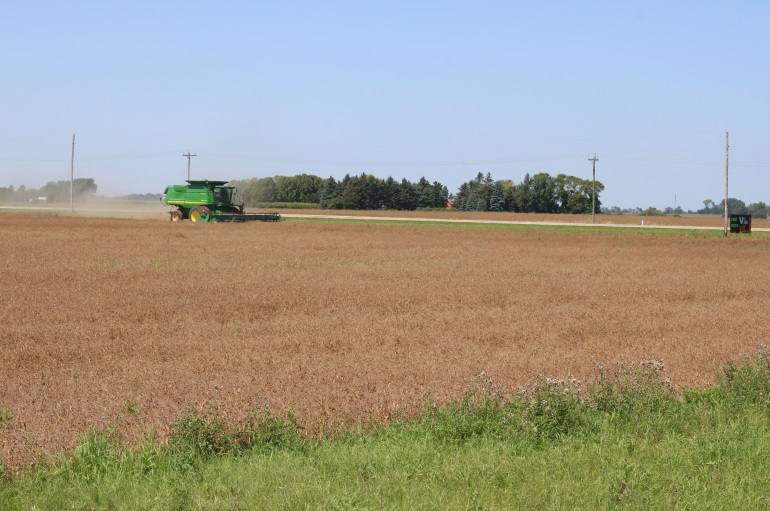Combines are starting to roll across field pea acres in Manitoba, where conditions have allowed.
Manitoba Agriculture industry development specialist for pulses, Dennis Lange, says growers want to begin harvest when peas are in the 16 to 17 percent moisture range and plants are looking brown and mature.
With the significant increase in field pea acres in Manitoba this year — according to Manitoba Agricultural Services Corporation's estimates it has more than doubled — Lange has some tips for growers who are new or renewed pea growers this year.
1. Choose a flex header
Lange says a flex header will float along the soil surface, following the contours of the ground and cutting peas nice and low.
"You want to make your adjustments accordingly so you're not pulling in any soil into the combine," Lange says, adding that soil can stain the peas when they're moving from the auger to the grain truck. "Flex headers have different levels of adjustment, from the point of being almost rigid, to having quite a bit of flex. If you have too much flex, you might be losing a few more peas, so you have to play around with it a little bit."
Lange says it's also key to maintain a good ground speed and to make sure the cutting sections are sharp. 
2. Select a large wire concave
When it comes to concave type, Lange says what you'd be using for your soybeans is what you should use for you field peas.
"You want those peas to drop through the concave into the cleaning system as quickly as you can," he says.
Threshing speed is also key, and Lange notes with peas, for a rotary combine, growers should be running in the 300 to 400 r.p.m. range.
"The clearance of the concave is also important. You want to run your concave similar to what you would with wheat," Lange explains. "The reason you want to do that is you want to get that rotor to thresh those beans out quite quickly in the first pass and have those seeds fall through. If you have a wider concave opening, what happens is those peas travel through, every time the rotor hits, there's more chance of splitting."
3. Check for losses
When checking for losses, Lange says growers should take a look behind the header, as well as at the back end of the combine. Growers should check to see how many beans there are per square foot, and average that over the whole header width.
"Four beans per square foot would translate into a bushel, so for example, if you're only seeing two beans per square foot coming out the back of the combine, that would be a very good range to be in," says Lange. "If you check behind the header and you're seeing really high losses, then you may need to adjust your reel speed or your cutting height."
When checking for quality, Lange says growers should also take look at the sample in the back of the grain truck.
4. Wait out wet field conditions
Abundant rains in some areas of the province have created wet field conditions, making the ground too soft for what a flex header can handle. For the most part, Lange says growers will have to wait for the ground to dry and firm up a bit.
From the samples Lange has seen of field pea harvest thus far, he says quality is looking reasonably good despite the weather concerns that arose this season.
















